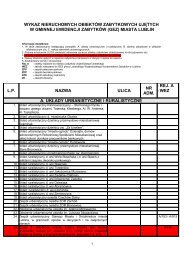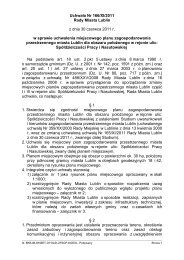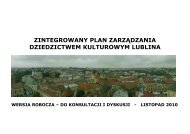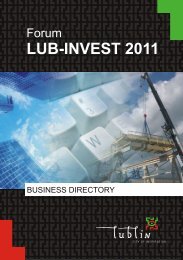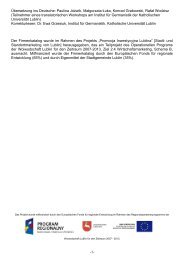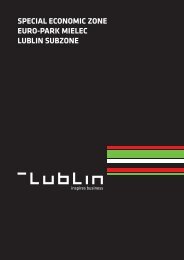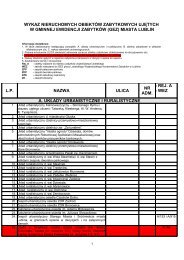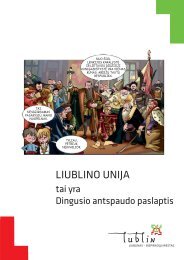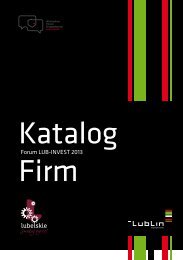The URBACT II Programme 2007 - 2013 - Lublin
The URBACT II Programme 2007 - 2013 - Lublin
The URBACT II Programme 2007 - 2013 - Lublin
You also want an ePaper? Increase the reach of your titles
YUMPU automatically turns print PDFs into web optimized ePapers that Google loves.
Final Application Form TN <strong>URBACT</strong> <strong>II</strong><br />
To control and maintenance the invasion of “flora” (green areas)<br />
into the historic parts, which threatens the heritage infrastructure.<br />
Concerning “Integrated revitalisation/ balancing the needs” the<br />
main challenges are:<br />
To improve the accessibility of the citadel (for inhabitants!) and<br />
to resolve the traffic problem that transits the town centre (pollution);<br />
To combine the urban cultural heritage with the natural heritage<br />
attractions around the city;<br />
To keep traditional commercial activities and shops for the daily<br />
demand in the town centre; in general they are replaced by<br />
handcraft stores for tourists and commercial stores for middle to<br />
high income classes;<br />
To secure the housing/ residential function in the town centre;<br />
To link the citadel and its “downtown” area, keeping them together<br />
as the town centre;<br />
To sustain the town centre as place for all stakeholders, not only<br />
tourists;<br />
To make use of the tourism potential to develop economic activities;<br />
To protect the downtown area from periodical floods.<br />
PP5 Liverpool Liverpool’s recent increase in public and private investment improved<br />
the economy and environment of the historic centre, but<br />
there is pressure on the historic urban fabric. Major challenges for<br />
Liverpool is to ensure that the regeneration benefits are spread beyond<br />
the city centre and that the city’s historic environment is adequately<br />
conserved and continues to be a key driver in the city’s regeneration.<br />
Concerning “visual integrity” the main chalenges are:<br />
To preserve historic buildings at risk of deterioration (providing<br />
guidance);<br />
To incite owners who are absentee, have unrealistic expectations<br />
and/or limited interest in cultural heritage or capacity to<br />
carry out repairs;<br />
To control attic extensions and roof-top plant;<br />
To ensure that the design of new developments respects its historic,<br />
spatial and townscape characteristics of its setting;<br />
To protect the key views and the views of landmark buildings;<br />
To ensure that the scale of new development does not dominate<br />
the historic character of the site;<br />
To animate the redundant dock water-spaces without damaging<br />
their visual and historic integrity.<br />
Concerning “Integrated revitalisation/ balancing the needs” the<br />
main challenges are:<br />
To reconnect the city centre with the waterfront and attracting<br />
the waterfront;<br />
To create a positive image and identity;<br />
14




